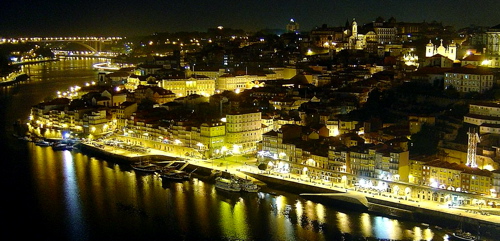As I was browsing through this year Architecture for Humanity’s very considerable output, I was wondering if there isn’t still something missing in this kind of architectural action, at least for it to be relevant not only to humanity, but also for the architectural field itself.
Why should I ask such apparently irrelevant question? Because I know only too well that any architectural movement that forgets to produce advancement in the architectural field will tend to be marginalized by the field itself. And, at this moment in time, maybe this is an indulgence we can’t afford.
Of course, all the “architectures for humanity” out there are relevant by simply bringing architectural service where this is most needed. But maybe the problem is, ultimately, that architecture should not be simply considered a service.
As I was recently musing, we should rather consider architecture as a form of creative intelligence – not to enter the old discussion of it being a form of art or not – and ask ourselves how and to what purpose should this intelligence be deployed besides its banal contribution to middlebrow culture.
The thing is: as constrained as it is by economic and logistical difficulties the output of Architecture for Humanity is highly respectable, and yet fails to trigger the imagination or any craving for architecture’s creative potential, as somehow their own publication “Design like you give a damn” or, for instance, the work of Rural Studio have done in the recent past.
And in order for a work like that of Architecture for Humanity to grow into even more significance –and thus replicate throughout the world of architecture– it has to attract and offer sheer intelligence. Not more or less traditional solutions, not more or less lame architecture, but definitely more radical answers.
As painful as it may be for many different reasons, try and imagine Bjarke “Yes Is More” Ingels employing his amazing energy and optimism onto devising solutions for African feral cities, rather than for providing jewels for the ascending, nouveau-riche crowns, and you will know what I mean.
In the strange world of architecture’s semi-autonomy there are two ways in which one may be a successful achiever: by aspiring to economical wealth or by juggling in symbolic power. As it usually happens in the “reversed economic world” of culture and art – as Bourdieu has put it – symbolic power is the one that is more difficult to obtain and maintain.
The current, declining star-system attained its status by achieving symbolical power, as it is the rule. One still remembers OMA or Nouvel going bankrupt or selling their companies because of the level of research that permeated the logic of these offices. When, on the other hand, one feels such practices have “sold-out” on another level their symbolic status immediately plunges.
When, in the spirit of an inescapable Hopenhagen, one now says that design and architecture intelligence must be applied elsewhere rather than where it has been applied for the last decade, one is also saying that the game of symbolical power must also shift around what architecture is recognized for.
Although prizes and rewards are already being readdressed to shift this balance of symbolic power, organizations like Architecture for Humanity must be made more relevant not by feebly fighting the status quo, but by addressing not only what humanity needs, but also what architecture needs.
And this is to be done by employing the architectural creativity that is being laid to waste by the “crisis”, or more precisely by the unemployment or underemployment of young architects who, ultimately, just want to follow on BIG’s footsteps but haven’t yet quite worked out the right strategy for it.
This is to be done not by simply clinging to traditional architectural thinking, not by blindly obliging to the user’s needs in terms of a very delimited sense of taste, but essentially by thinking outside the box and by constantly readdressing architecture’s sense of autonomy – that is, architecture’s inner need to progress as a field of knowledge and practice.
In this sense, like others, the world of architecture itself would certainly gain something from considering Hal Foster’s concept of semi-autonomy in art and design as an oscillating movement between art’s critical need to remain autonomous from external forces and, on the other hand, its inevitable reconnections to reality so as to reestablish priorities and issues to address.
Faced with the absurdity of maintaining the fiction of architecture’s aesthetic autonomy, but also faced with the error of demising oneself from architecture’s inner symbolic drives, one has to meet somewhere halfway so as to make architecture intelligence more relevant to as many people as possible.
At the risk of sounding cynical – and since ethical arguments are useless with a professional class that is permanently ego-tripping – I would conclude that architecture for real need has to become really trendy.
…






 This is a city where I lived for considerable parts of my life, and a city to which I usually commute to teach every week.
This is a city where I lived for considerable parts of my life, and a city to which I usually commute to teach every week. Casa da Música in context, via
Casa da Música in context, via 
